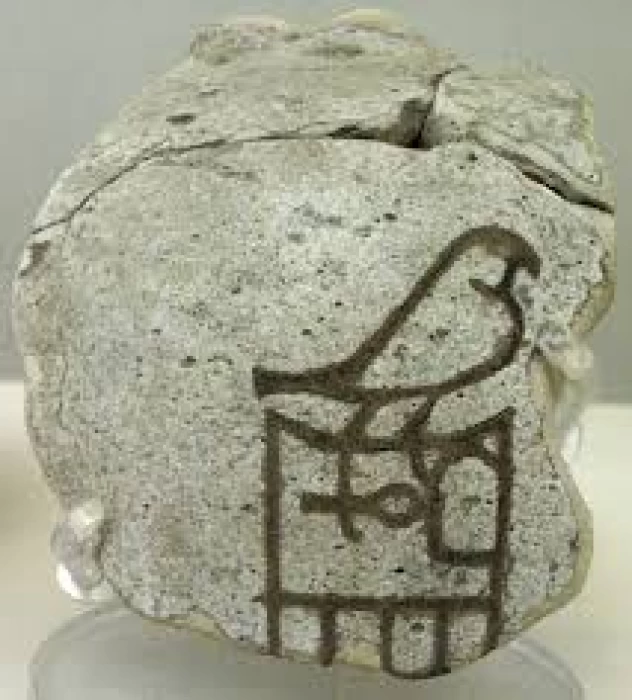
Facts About King Hor-Aha | Dynasty 1 | Horus Aha King
Temple of Horus
The construction of this huge temple of the god “Horus” began during the reign of Ptolemy III - yurgetes I (English: Ptolemy III Energetics I) (the word “yurgetes” means “benefactor”) in the year 145 BC.Ad, and the construction of this temple took about 200 years, since its creation was completed during the reign of “Ptolemy XIII” in the first century BC.
Osiris was his father, who was the God of resurrection and reckoning among the ancient Egyptians. According to a religious legend, his uncle Setti killed his father and distributed his parts throughout the Egyptian countryside. His mother was ISIS, so she collected his father's body parts, which is considered the first embalming process, and she slept with his father's body. Horus was born then and wanted to take revenge on his uncle and take revenge for his father, therefore Horus is sometimes called the “protector of his father”.
Among the ancient Egyptian spells, we find many of them in the image of the eye of Horus, which is called “wagat” and is attached to the chest.
His mother Isis was the goddess of the moon for the ancient Egyptians.
Horus as the name of the King
The name of the king is waghi (snake) and on it Horus (in the image of a Falcon) is standing on the palace Flint. (The first dynasty around 4000 BC).
The work of Horus for all the Kings of Egypt was the highest example in that he avenged his father from his murderer and was just. Therefore, they took the name "Horus the living", which is one of the oldest royal titles in ancient Egypt. His name was mentioned in ancient times in conjunction with Hathor and the first Scorpion King. Horus in this title appears standing on the palace edifice, surrounding the name of the King.
Horus is also found on the famous painting of Narmer or the painting of King Mina, which is from the era of the first dynasty of Egypt. He grabs the heads of the defeated enemies of Egypt and presents them to the King. Until the fourth dynasty, the title of Pharaoh consisted only of the name Horus, and during that dynasty the name of the Golden Horus also appeared, as the second title of the King.
The eye of Horus.
The ancient Egyptians used fractions in the calculation in the form of 1 / x and especially for the division and distribution of yields, such as:1/2, 1/4 and others and used the eye of Horus to represent it.
Each part of the eye of Horus represented a certain fraction (see figure) and they were parts of the standard size, they had the so-called "rights", i.e. representing 1/2 rights or 1/4 rights Or 1/32 rights and so on. If we add these fractions, we get the sum 63/64, that is, the sum is less than one by 1/64. And when one of the students asked his teacher in ancient Egypt, where did the missing 1/64 go the teacher replied that the God Tut - The God of calculation-had hidden her. This was the belief of the ancient Egyptians.
Sons of Horus
The ancient Egyptians consider Horus to have fathered four sons, namely: "Habi", "amasti", "demotic" (meaning "protector of his mother") and "kabhasnov"(meaning "giving drink to his brother"). In the book of the dead there is usually an image of Osiris sitting on a throne in the afterlife and behind him his sisters ISIS and Naphthas, and in front of him stands [the four sons of Horus standing on a lotus flower to hold Man accountable. On the other hand, the preparation and embalming of the dead was done by opening their body, taking the heart (the heart is not extracted because the ancient Egyptian goes to the other world and immortalizes living in the fields of Uzair) and the entrails and placing them in four flasks (canopic jars) form the four sons of Horus to preserve their safety. Those four flasks were placed attached to The Mummy, which embalmed and filled with substances that prevent its decomposition.
The ancient Egyptian idea was that Horus would present the deceased to Osiris if he succeeded in the balance test, so he would take beautiful clothes and enter "paradise". The balance is tested as follows: the heart of the deceased is brought and placed in one of the two palms of the scale. A "feather" (Maat) is placed in the other cuff, which is a symbol of "justice and good morals". If the feather is heavier than the heart, it means that the deceased was good in his life and a generous creation, so he takes beautiful clothes and enters the garden of "paradise" to live in happy contentment. But if the dead man's heart is heavier than a featherweight, it means that he was a mighty stick in his life.
It is also an ancient Egyptian legend that Horus was sending his four sons at the coronation of the pharaoh of Egypt in the four corners of the earth to herald the influence of the new king.














